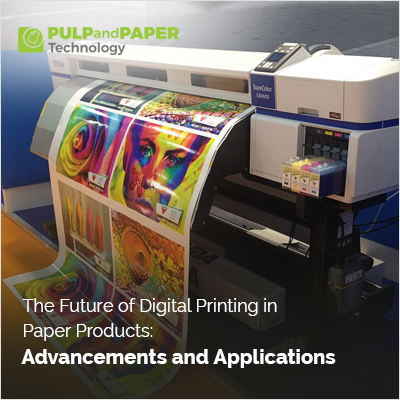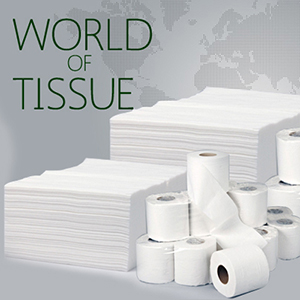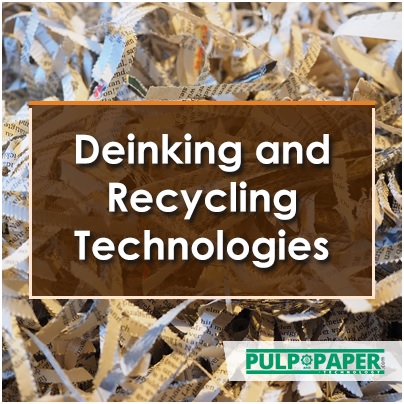The Future of Digital Printing in Paper Products: Advancements and Applications

Introduction:
In recent years, digital printing technology has undergone significant advancements, revolutionizing the paper industry and opening up new possibilities for customization, efficiency, and environmental sustainability. This article explores the cutting-edge developments in digital printing and their wide-ranging applications in the production of paper products.
1. High-Speed Digital Printing:
High-speed digital printing technologies represent a transformative leap in the efficiency of large-scale paper manufacturing. Recent advancements in this field have ushered in a new era of rapid production times and increased throughput. These cutting-edge technologies leverage innovative print heads, precision engineering, and enhanced ink formulations to achieve speeds that were once thought unattainable. The significance lies not only in the acceleration of the printing process but also in the consequential reduction of lead times and enhanced overall operational efficiency. Large-scale paper manufacturers can now meet demanding production schedules more effectively, enabling them to respond promptly to market demands. This not only streamlines the manufacturing process but also minimizes costs associated with prolonged production cycles. High-speed digital printing is a game-changer in the paper industry, offering a potent combination of speed, precision, and efficiency that positions manufacturers to thrive in today's dynamic and competitive market landscape.
| Read More: Print Precision: Optimizing Printing Lines for Efficiency and Quality |
2. Variable Data Printing for Customization:
Variable data printing has become a crucial technology in satisfying the rising demand for personalized and customized paper products. This innovative method facilitates the individualization of each printed piece within a single print run, making it feasible to produce bespoke items on a large scale. In response to the escalating market preference for distinctive and tailored experiences, variable data printing is finding diverse applications across various industries. In packaging, for example, it enables the incorporation of personalized elements such as customer names or location-specific information. Within marketing materials, variable data printing empowers the delivery of targeted content, optimizing engagement by tailoring messages to specific demographics. The adaptability of this technology extends to various paper products, including direct mail, invitations, and promotional materials. As businesses increasingly aim to establish meaningful connections with their audience, variable data printing emerges as a crucial facilitator, providing a versatile and efficient solution to meet the evolving expectations of consumers in the contemporary market.
| Also Read: What Are The Benefits Of Digital Printing For B2B Applications? |
3. Enhanced Color Management:
Advancements in color management within digital printing have ushered in a new era of precision, ensuring improved color accuracy, consistency, and expanded color gamuts. These enhancements play a crucial role in the production of vibrant and high-quality paper products. Through sophisticated color profiling techniques and refined ink formulations, digital printing technologies can now reproduce colors with unprecedented fidelity, bringing out the subtleties and nuances of the intended design. Consistency across print runs is also markedly improved, mitigating variations that were once a challenge in traditional printing methods. Expanded color gamuts allow for a broader spectrum of shades, enabling the reproduction of intricate details and intricate color schemes. This level of color control not only elevates the visual appeal of paper products but also enhances brand representation, making digital printing a preferred choice for businesses seeking to deliver a vivid and consistent visual experience in their printed materials.
4. Sustainable Printing Practices:
Digital printing is emerging as a pivotal force in advancing sustainability within the paper industry, championing eco-friendly practices. Central to this movement is the adoption of sustainable inks, carefully crafted to minimize environmental impact while maintaining top-tier print quality. Moreover, digital printing significantly contributes to waste reduction through its on-demand printing capabilities, eradicating the need for extensive print runs and excess inventory. This not only cuts down on paper waste but also diminishes the energy consumption associated with traditional printing methods. The precision of digital printing in producing precise quantities needed further streamlines resource utilization, positioning it as a more environmentally conscious choice. As businesses increasingly prioritize sustainability across diverse industries, the shift towards digital printing stands as a mindful and impactful step in shrinking the ecological footprint of paper manufacturing, propelling us towards a greener and more environmentally friendly future.
5. 3D Printing on Paper:
The growing inclination toward 3D printing on paper is reshaping the traditional landscape of paper products, introducing a range of textured and three-dimensional effects. This cutting-edge technology is revolutionizing packaging and promotional materials, providing consumers with a tactile and visually striking experience. Through the layering of materials on paper surfaces, 3D printing achieves intricate textures and raised patterns that were once challenging using conventional printing methods. Beyond enhancing the visual appeal of packaging, it delivers a distinctive sensory experience for consumers engaging with promotional materials. The versatility of 3D printing on paper unlocks avenues for creative and attention-grabbing designs, marking it as an exciting frontier for industries seeking product differentiation in a visually competitive market. As this trend gains momentum, the fusion of 3D printing and paper is poised to redefine the possibilities of print, establishing a new standard for immersive and engaging consumer experiences.
6. Integration with Smart Technologies:
The integration of digital printing with smart technologies, such as RFID (Radio-Frequency Identification) and NFC (Near Field Communication), marks a transformative leap in the paper industry, enabling the creation of interactive and connected paper products. This convergence has found particularly promising applications in smart packaging and labeling, enhancing consumer engagement and interaction. With RFID and NFC tags seamlessly incorporated into printed materials, products can now convey dynamic information, personalized content, and even interactive experiences to consumers through their smartphones or other compatible devices.
Smart packaging, enabled by digital printing technologies, not only provides real-time product information but also opens the door to novel marketing strategies and brand-consumer interactions. This fusion of digital printing and smart technologies represents a paradigm shift, turning traditional paper products into intelligent interfaces that actively engage consumers in an increasingly connected and tech-savvy world. As this integration gains momentum, the potential for innovative and interactive consumer experiences within the realm of paper products continues to expand, reshaping the landscape of packaging and labeling in the digital age.
7. Digital Printing in Packaging Design:
Digital printing has significantly impacted packaging design, ushering in a new era of creativity and flexibility. The technology's capability to reproduce intricate patterns and unique textures has revolutionized the visual and tactile aspects of packaging. Designers can now unleash their creativity by incorporating detailed and complex graphics that were once challenging to achieve with traditional printing methods. Moreover, digital printing allows for the seamless integration of variable information, enabling brands to personalize packaging with targeted content. This flexibility not only benefits brand aesthetics by enhancing visual appeal but also plays a crucial role in consumer communication. Brands can tailor packaging to convey specific messages, promotions, or even regional variations, fostering a deeper connection with consumers. The ability to adapt packaging designs quickly and cost-effectively to changing market demands positions digital printing as a dynamic force in the packaging industry, where aesthetics and communication are integral components of brand identity and consumer engagement.
8. On-Demand Printing and Reduced Inventory:
On-demand printing represents a pivotal shift in the production methodology within the paper industry, offering substantial advantages in inventory management. By moving away from traditional large print runs to a more responsive on-demand model, businesses can minimize the need for extensive inventories. This strategic shift not only results in significant cost savings but also mitigates the risk of overproduction and the associated waste. With on-demand printing, manufacturers can tailor their production to meet current demand, reducing the need for stockpiling finished goods. This not only streamlines the supply chain but also enhances operational efficiency, allowing businesses to respond swiftly to market fluctuations and evolving consumer preferences. The reduction in excess inventory not only contributes to sustainability goals but also proves economically advantageous, making on-demand printing a valuable strategy for companies seeking to optimize resources and minimize environmental impact in today's dynamic market landscape.
9. Augmented Reality (AR) Integration:
The fusion of digital printing with augmented reality (AR) has given rise to a new frontier of interactive and immersive paper products, revolutionizing experiences in advertising, education, and entertainment. By integrating AR elements into digitally printed materials, such as brochures, posters, or packaging, users can unlock additional layers of content and engagement through smartphone or tablet applications. In advertising, this technology enables brands to offer interactive product demonstrations or virtual try-on experiences. In education, printed materials can come to life with supplemental multimedia content, enhancing learning materials and engagement. In the entertainment industry, AR-enhanced paper products can provide users with unique and interactive storytelling experiences. This seamless integration of digital printing and AR not only adds an exciting and dynamic dimension to traditional print but also exemplifies the innovative potential when marrying physical and digital realms. As AR continues to evolve, the collaboration with digital printing promises to redefine how we interact with and perceive printed materials in diverse and engaging ways.
10. Challenges and Future Outlook:
In embracing the potential of advanced digital printing technologies within the paper industry, it is imperative to recognize the challenges that businesses might confront. A noteworthy obstacle lies in the initial investment costs linked to the procurement of cutting-edge digital printing equipment. The shift from conventional to digital printing necessitates a significant upfront investment, potentially acting as a barrier for certain businesses. Furthermore, the demand for skilled personnel adept at operating and maintaining these sophisticated printing systems must be addressed. There is a crucial need for a workforce equipped to maximize the potential of digital printing technologies. While the promise is immense, overcoming these challenges will be integral to unlocking the full benefits of digital printing in the paper industry.
Looking ahead, the future of digital printing in the paper industry appears dynamic and transformative. Ongoing research and development efforts are likely to focus on overcoming existing challenges, potentially leading to more cost-effective and user-friendly solutions. As technology continues to evolve, advancements in digital printing may include even faster printing speeds, enhanced color capabilities, and greater compatibility with sustainable practices. The integration of artificial intelligence and machine learning may further optimize printing processes and improve overall efficiency.
Furthermore, innovations in materials and inks may expand the range of applications for digital printing on paper, offering new possibilities for customization and creativity. The industry can anticipate a continued shift towards on-demand printing, reducing waste and enabling more responsive production cycles. As digital printing becomes more mainstream, its role in creating personalized and sustainable paper products is likely to strengthen, aligning with the evolving preferences of businesses and consumers alike. In conclusion, while challenges persist, the future outlook for digital printing in the paper industry is marked by continued innovation and the potential for a more sustainable, efficient, and creatively driven landscape.









